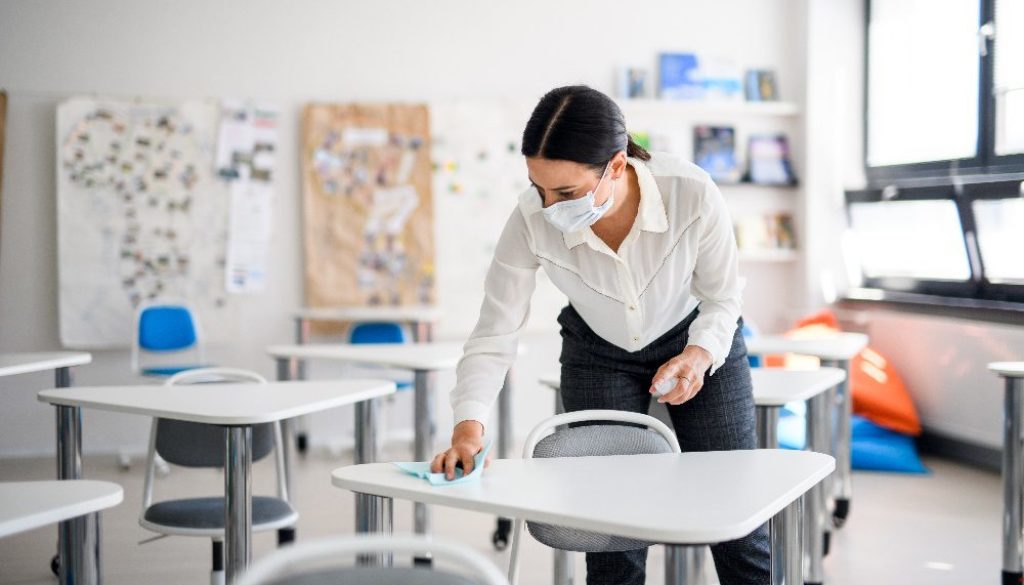Why It’s Important to Check-In on Your K-12 Employees
The coronavirus emergency has uprooted K-12 education world, closing down schools with many school leaders struggling to adjust to and support digital learning. Throughout the COVID-19 pandemic, schoolteachers, counselors, and other school employees have been focused solely on supporting the needs of students and continuing to do their jobs as best they can. Mental health issues for kids during this time has been a huge concern, but many are not paying attention to school employees who may also be facing their own mental health struggles.
Unfortunately, even pre-pandemic, there are major stressors associated with working in the education field. Data from a 2013 Gallup-Health-ways Well-Being Index found that 46% of teachers in K-12 settings report high levels of daily stress during the school year, which was similar to that of nurses (46%) and physicians (45%) and is highest – along with nurses – among the 14 categories included within this study, according to the National Center for Biotechnology Information (NCBI). Additionally, another study conducted by the American Federation of Teachers in 2015 found that 78% of teachers reported feeling both physically and emotionally exhausted at the end of a school day.
Some of the factors contributing to stress for school employees include the growing ubiquity of standardized testing, large class sizes, student behavioral challenges, inadequate resources, poor physical space, workload, paperwork, a feeling of moral responsibility for others, and now on top of all of that, the COVID-19 global pandemic.
How K-12 Schools Can Support Their Employees
It’s important for K-12 schools and districts to support their employees throughout this difficult time, especially amid remote learning challenges and with the new guidelines in place for reopening schools in the fall. Teachers and other school employees may have worries about returning to the classroom amid the coronavirus pandemic, and some may be part of a vulnerable population that puts them more at-risk when it comes to the virus. Others may have concerns for their students – from public health concerns to individuals behind on the curriculum – which in turn is causing them elevated levels of stress.
School leaders must leverage their tools to reach out to teachers and other remote employees to ensure they’re taking advantage of all resources possible, and are managing their physical and mental wellbeing. With a school safety solution, such as a mobile panic button or mass notification solution, users can send out messages internally to staff through text, voice message, e-mail, or digital signage. Share mental health tips such as emphasizing self-care, exercise, and self-compassion, creating a dedicated workspace, setting reasonable office hours, and maintaining communication with other school workers.
If your school safety solution has wellness check capabilities, or a polling feature, that’s another helpful way school leaders can check-in on their employees. With this feature, users can send a URL to employees which prompts them to answer a polling question, which for example could be: “How is your mental health today” with 1 not great and 5 being great. With the results, educators can analyze who’s struggling with mental health and may need additional support and resources to help. A poll-based alerting system integrates within a mass notification solution, allowing users to solicit information, and even location data, from a select group of recipients via text message, voice call, and email.
Leveraging a mobile safety app can also help administrators better understand the challenges in their community as remote learning continues. For example, teachers can share any resources that are lacking – such as a digital classroom tool or a specific textbook – to offer a better look at shortages. Administrators can use this data to assist teachers when possible and help mitigate everyday stressors in the classroom.
As the globe struggles to adapt to the changes caused by the coronavirus pandemic, keeping mental health front of mind is extremely important. While students must be encouraged to take care of themselves and take advantage of remote counseling services, teachers can only provide crucial education if they are also sure to manage their own wellbeing. K-12 leaders can leverage technology solutions to better communicate resources and support workers throughout the pandemic.





